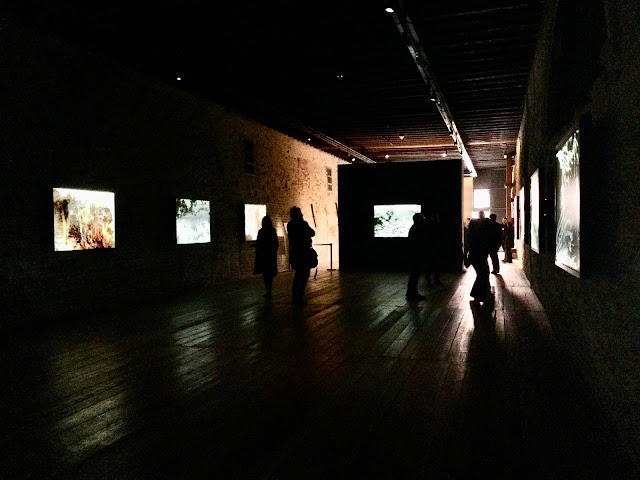(Venice, Italy) Before you enter into Marcel Duchamp and the Lure of the Copy at the Peggy Guggenheim Collection, take a few minutes to watch the short film playing on a loop outside the main exhibition.
"A Conversation with Marcel Duchamp" took place between Duchamp and James Johnson Sweeney, the Director of the Solomon R. Guggenheim Museum, in 1956 when Duchamp was in his late 60s. They chat about his career, surrounded by Duchamp's artwork at the Philadelphia Museum of Art.
After his early explosion onto the art scene in 1912, Marcel Duchamp (July 28, 1887 - October 2, 1968) said to himself, "No more painting. You get a job." He became a librarian in Paris so he would have enough time to paint for himself and not have to worry about pleasing other people. He did not want to have to depend on selling his artwork to earn a living.
Duchamp: ...You are either a professional painter, or you are not. There are two kinds of artists -- the artist that deals with society, that is integrated in society, and the other artist, a completely freelance artist ...that has no bonds.
Sweeney: The man in society has to make certain compromises to please them and to live. Is that why you took the job?
Duchamp: Exactly. Exactly. I didn't want to depend on my painting for a living...
Sweeney: ...Marcel, when you speak of your disregard for the broad public and say you're painting for yourself, wouldn't you accept that as painting for the ideal public, for a public which should appreciate you if they would only make the effort to?
Duchamp: Yes, indeed. It's only a way of putting myself in the right position for that ideal public. The danger is to please an immediate public, the immediate public that comes around you, and takes you in, and accepts you, and gives you success and everything. Instead of that, if you wait for your public that should come 50 years, 100 years after your death, that's the right public.Marcel Duchamp died peacefully on October 2, 1968 at age 81 at his home in Neuilly, France after having dinner with his dear friend, Man Ray, and the art critic, Robert Lebel.
It's now been 55 years after the death of Marcel Duchamp. You have until March 18, 2024 to go over to the Palazzo Venier dei Leoni on the Grand Canal, the home of another long-time Duchamp friend, Peggy Guggenheim, and see if you are part of his right, ideal public.
 |
| Box in a Valise by Marcel Duchamp (1935-41) Photo: Cat Bauer |
Marcel Duchamp - The Lure of the Copy, curated by Paul B. Franklin, art historian and Duchamp expert, is the first exhibition at the Peggy Guggenheim Collection dedicated exclusively to Marcel Duchamp. Go to the Peggy Guggenheim Collection for more information.
Ciao from Venezia,
Cat Bauer
Venetian Cat - The Venice Blog





